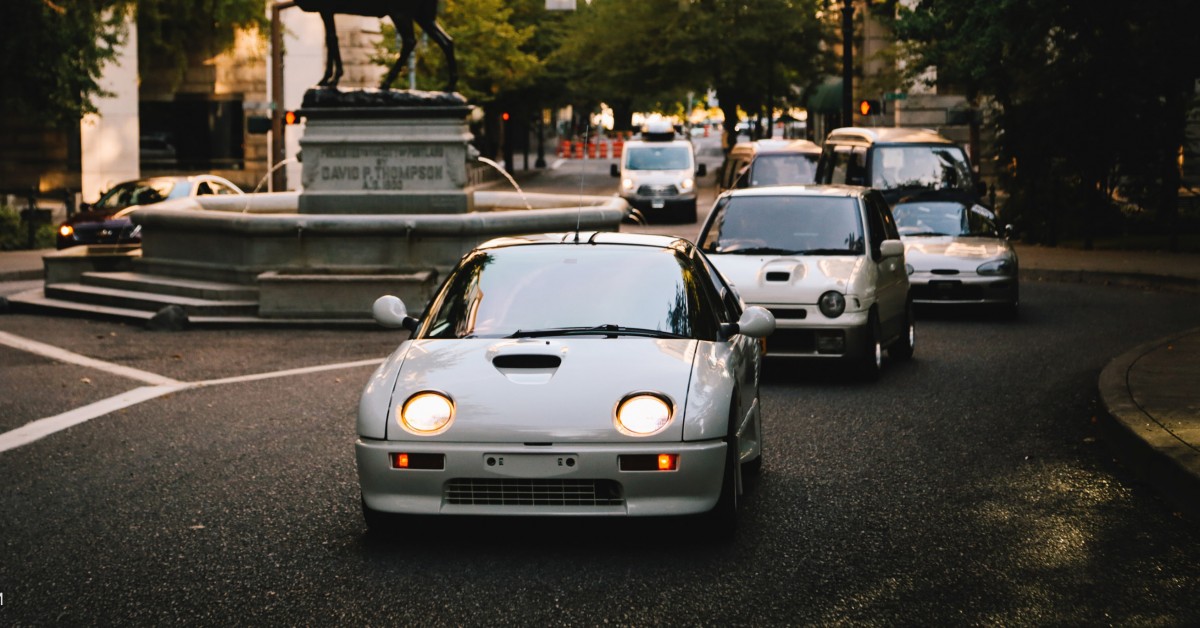
Escaping from crowded streets after some stressful working days, running errands for your loved one using shortcuts, or on a sunny day, being chased by hundreds of thirsty zombies… Whatever your little trip’s reasons are, if you are now eyeing some mini vehicles with easy navigation and low maintenance, Kei cars might be the one.
What Is A Kei Car?
Kei cars, also known as microcars, city cars, or ultra-minis, are the tiniest highway-legal automobiles available in Japan. The Kei category also includes mini-trucks, mini-vans, and even mini-campers.
They are known as “keijidōsha” (or “light automobile”) and are typically pronounced as “kay” (although some may have a different interpretation).
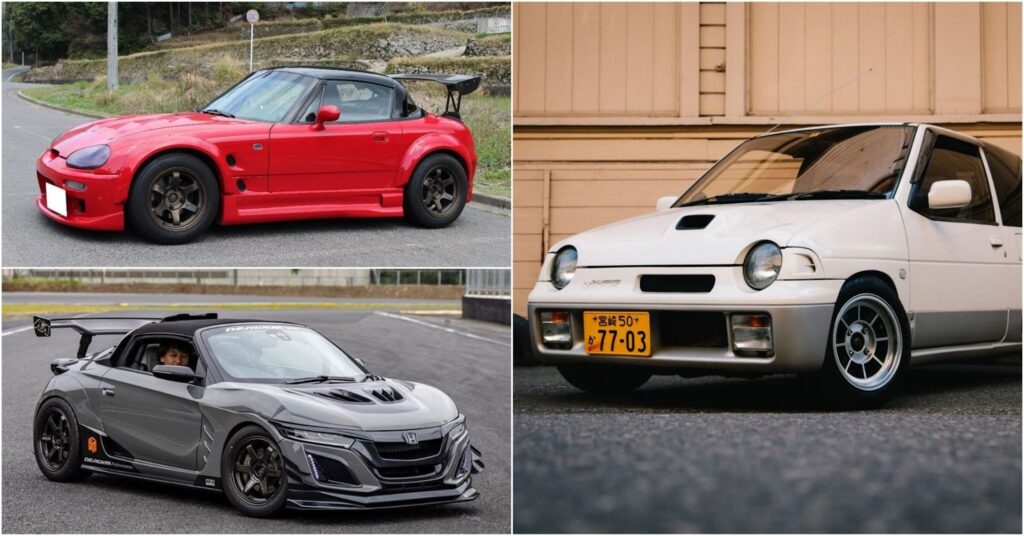
The wide popularity of this car defines the whole period of “overcoming difficulties” history of Japan. Many people were surprised to learn that one of the first cars built by today’s leading Japanese automakers such as Honda, Mazda, Mitsubishi, Daihatsu were convertible Kei models.
Kei Cars History: A Wave In JDM Car Market
The idea of a small car appeared shortly after World War II. Nearly then, every country was resourced hungry because of steel and energy shortage. The demand for small cars starts here. Car manufacturers were oriented to create low-priced ones for the living standards of Japanese people in the early stage of country revival to encourage the development of the auto industry.
The Japanese government has set a standard for small cars that are mostly converted, based on the 3-wheel motorcycles that people are using. These standards have become the first criteria to form a new line of 4-wheel vehicles, the Kei car, enjoying a remarkably favorable tax rate.
The first model, born in July 1949, was limited in engine capacity. Initially, manufacturers could only equip Kei cars with 150cc four-stroke engines or 100cc two-stroke engines. Then, to drive more consumers, the limit on engine displacement was gradually increased in 1950, 1951 and by 1955, 360cc Kei cars were created and quickly made their mark on the market.
In the following years, especially during the 60s, the next Kei generation was increasingly equipped with more innovative features such as the automatic transmission that appeared in the Honda N360 in August 1968, or the automatic transmission system. The disc brake system available in some sports models, of which the pioneer is the Honda Z GS model, has a larger carburetor to increase the vehicle’s performance.
However, by the 70s, the Japanese government began to narrow the incentives while imposing stricter emissions regulations. This had caused companies to go through an extremely difficult period when the number of cars consumed was shrinking.
Many began to doubt the continued existence of this line when both Honda and Mazda stopped working on the passenger market in 1974 and 1976.
At the beginning of 1976, new standards for Kei cars were introduced with engines larger than 550cc, increased body dimensions with 10mm wider, 20mm longer, and reaching 3.2 m. However, today’s popular models only originate from the new standards in 1990 that allowed Japanese k cars to be 3.3 meters long, 1.4 meters wide with 660cc engine displacement.
During this period, sports ones appeared, such as Honda Beat, Suzuki Cappucino, Mazda Autozam AZ-1, and Suzuki Alto Works. With amended regulations in 1990, a 110cc displacement increase was allowed, resulting in a new output of 660cc, and a proposed increase in car length of 100mm integrated some new safety features.
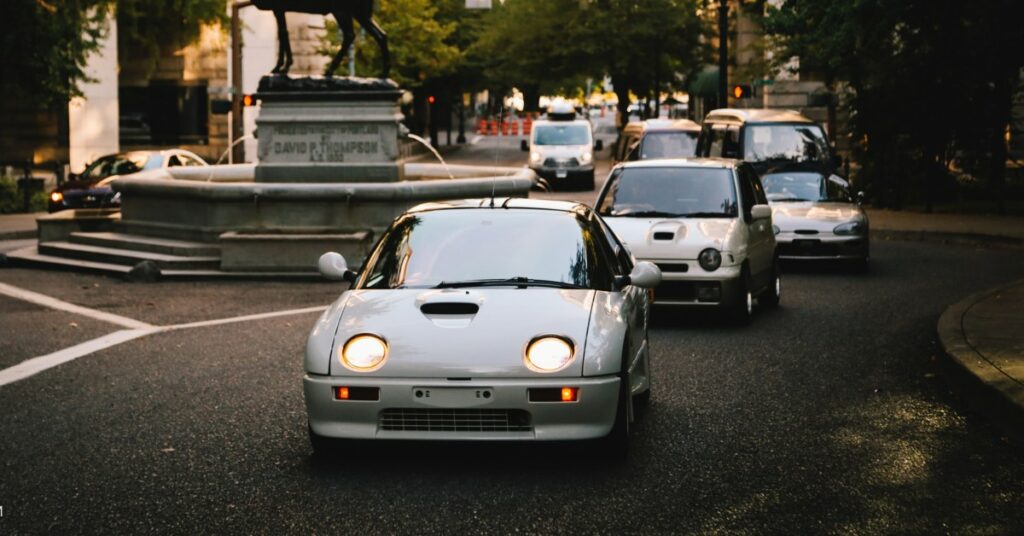
In 2006, the sales of K-car reached a record of 2 million units, accounting for 30% of vehicles sold in the Japanese market. The Suzuki Wagon R and Daihatsu Move models have been at the top of the list of best-selling in Japan for many years.
The success of this model has become a clear demonstration of the creative will and not easily succumbing to difficulties of the Japanese.
Best Kei Cars In Japan: From Classy To Trendy
K-cars are still booming, among thousands of options, we would love to give out the updated list of 5 outstanding ultra-minis recommended by reviewers and editors all around the world.
1. Mitsubishi Minica
Inspired by the look of a small “Camino” and a 359 cc engine, the 1962 Mitsubishi Minica can be compared to the sports shoes of professional football players.
The Minica was a devoutly minimalist car with a 2 stroke, 2-cylinder air-cooled 359cc engine that produced an output of 17 horsepower. It was rear-wheel drive, and the suspension was straightforward, with a single rigid beam in the back and blades in the front and back.
2. Mazda Carol
The Mazda Carol is a Kei automobile with a boxy yet appealing appearance. Steel rims with plastic coverings are standard on all grades.
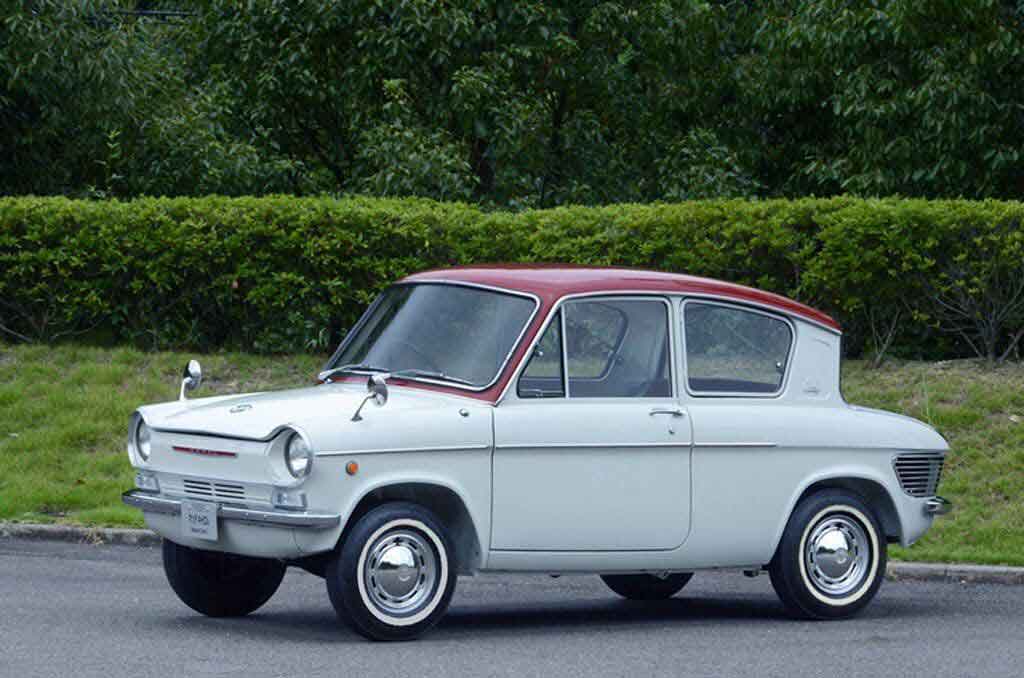
The space is limited and is best suited to four people of average height. It will be unpleasant for tall individuals, especially for long-distance travel.
3. Subaru Sambar
Sambar is a special Kei line of Subaru designed for the US market. Possessing a slightly odd appearance, Sambar possesses all the characteristics of a small truck with the maximum utility of use.
The Sambar’s cabin features a flat floor and a spacious luggage compartment. The seats are spacious and can accommodate up to seven people. It came standard with front airbags and an Antilock Braking System (ABS), air conditioning, power windows, central locking, power steering, and an audio system, depending on trim level.
4. Suzuki Cervo
Suzuki Cervo features a fairly unique, distinctive but boxy design language. The model has a lot of curves and sharp edges, giving it a sporty impression had a built-in spoiler that improved the rear appearance. In addition, the wheel covers are well-designed.
It also highlights a 0.66 Liter DOHC 12 Valve Inline-3 engine and CVT Automatic Transmission.
5. Honda S660
Honda has created a one-of-a-kind mid-engine, three-cylinder turbocharged engine, rear-wheel-drive chassis made of aluminum and steel just for the S660.
The cabin is a little bit cramped but cozy. The extra-small 350mm diameter steering wheel fits comfortably in the hands, and the stick shift is positioned correctly.
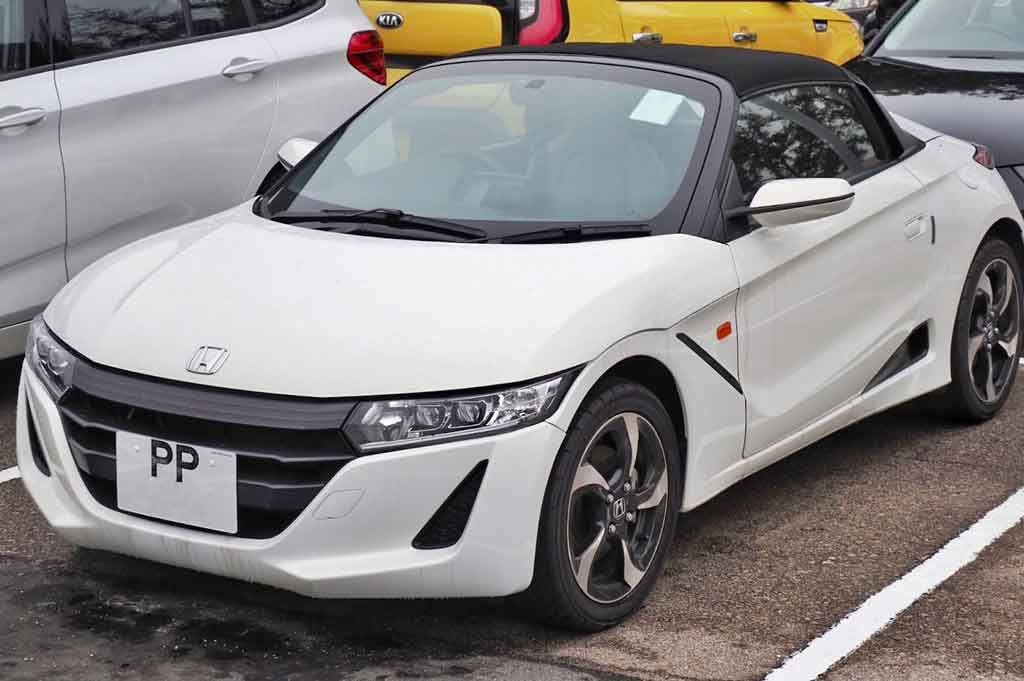
Importing Japanese Kei Cars: Worth To Note
In general, this type of Japanese automobile was rarely exported outside of the country. However, until recently, as their popularity has grown, many models have been successfully imported and exported to other countries.
Africa, India, and Australia have also imported a massive supply of low-cost, well-maintained secondhand JDM Kei cars nowadays. For the United States, under the 25-year exemption rule, you can now easily own one or several real Kei cars in America.
The cost of importing a car is determined by the type of vehicle, the ocean shipping method, and the distances between the origin and destination ports.
For example, importing Kei cars from Japan to the US may cost roughly $2000+ per vehicle; in Australia, depending on the port and the car’s size, fees can range from $1550 to $1990 per vehicle with a few extras for future add-on services.
FAQs about Kei Cars
1. Why are they called Kei cars?
Kei cars are known in Japan as “keijidōsha”, which is pronounced Kei-Ji-Dou-Sya, which means “Lightweight car”. Put it another way, “Kei” in Kei automobile refers to “light” or “lightweight.”
2. Are Kei cars legal in America?
Any non-federalized, foreign-market vehicle that isn’t at least 25 years old is prohibited from being imported and registered in the United States. This regulation applies to Kei vehicles and the JDM models in general since they are too small and do not meet American specifications for side-front and rear impact.
However, only Kei trucks (also known as “mini-trucks”) of any age are allowed to be imported as off-road vehicles and registered as ATVs (Automated Transfer Vehicle) in 21 states.
3. How much do Kei cars cost?
The majority of these automobiles cost a little more than one million yen. It is somewhere around $10,000.
4. Why are Kei cars so cheap?
They are often some of the cheapest automobiles you can buy in Japan due to their size and overall build quality.
5. Do Kei cars have airbags?
Though small and simple, they are fully capable and do feature airbags.
High-quality Kei vehicles are always equipped with airbags.
6. Can Kei cars go on the highway?
Yes, they can. They are the smallest Japanese highway-legal passenger cars with restricted dimensions and engine capacity.
Kei Cars In Japan: Wrapping Up
Currently, the main target customers of this minicar are women because it is more than enough to serve their shopping trips. Kei is also the choice of many drivers getting acquainted with cars for the first time and young girls consider it as a fashion trend.
This line of Japanese cars has been redesigned and exported to many other countries such as India and even Europe. However, the most blooming success of the Kei cars is still and will always be in its sweet home market, Japan.


